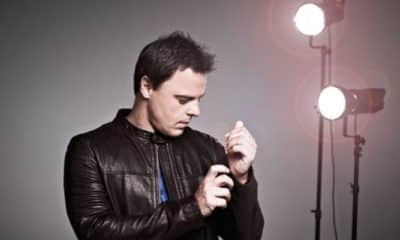Sound Plunge
Vintage to Vogue – The Charanjit Singh Miracle
SoundTree deconstructs the Charanjit Singh phenomenon, how the 72-year-old DJ went from forgotten genius to EDM sensation, and the people behind him who keep him going strong at 72.
soundplunge_test deconstructs the Charanjit Singh phenomenon, how the 72-year-old DJ went from forgotten genius to EDM sensation, and the people behind him who keep him going strong at 72.
It is an exciting time in Charanjit Singh’s life when we catch up with him post the Magnetic Fields Festival revelries. Ten Ragas to a Disco Beat was a vinyl album recorded by him thirty two years earlier, which had remained old and forgotten, till few years back. Charanjit Singh was then a film musician and founder of a band which mostly played during weddings. Charanjit Singh lived through exciting times in the world of Bombay film music. Experimentation with world sounds had just begun, and Charanjit Singh was in the thick of it all. As the bass guitar player in RD Burman’s close circle of trusted session musicians, his handiwork remains some of the more memorable parts of iconic songs. Charanjit Singh recollects, “Burman used to keep special bass guitar solos for me… That song “Musafir hoon Yaaron” in which you hear that sound – dhummm dhik taka a ta tak?… that was me. ”

Charanjit Singh back from 1973.
In what seems like a storyline worthy of tinsel town, a Dutchman found his album, recognized its genius and re-launched it to the wonder of electronica enthusiasts from all over the world. Following which, a young filmmaker/musician tracked him down and decided to dedicate himself to managing the affairs of this affable septuagenarian. That album was not any regular album; it was an archetype of acid house, which pre-dated acid house pioneer Phuture’s “Acid Tracks” by a good five years. It was time to rewrite history. Charanjit Singh might have been the forefather of acid house, with the fresh sound of his minimalistic Indian Ragas fine-tuned to the classic Roland – TB 303 beat. We see a relaxed Charanjit Singh sitting on a sofa, with his live act partner Dutch DJ Thee J Johanz and his manager Rana Ghose by his side, happy to be doing his own thing at last. We settle down for a chat this wintry morning, and he tells us eagerly how film music was completely different. How it completely depended on the music director, and how he was not at liberty to change a thing. This endearing performer is very enthusiastic at all times, as he leans in to tell us how things are exciting currently, how young people dancing to his music makes him very happy. Johanz adds, the live act is changing all the time, the drum beats are different, the mixing is different, even the crowd changes as they traverse through cities, countries and continents, riding on the high level energy reserve of their shared love and space of music.
Back in 1982
On a trip to Singapore in the year of 82, a seasoned musician Charanjit Singh buys the latest TB-303 bass line, a Jupiter 8 keyboard and a TR-808 rhythm composer, referred as the holy trinity of acid house. He comes back and tries something different from the moribund routine of film music. While he had made several albums with covers of film music, this one was different. Way ahead of its time, it unfortunately gets hidden in the crowd of EMI releases until 2010 when Edo Bouman from Holland discovers the treasure that is Ten Ragas to a Disco Beat, re-masters and re-releases it under Bombay Connection Records to tremendous acclaim. “The directors back then used to use disco beat in all of their songs” Charanjit tells us. “I said let me also use disco beat, but I did not use the songs, I used the ragas instead of using the tabla, like a lot of people do. It went off well.”
Cut to 2010
Rana Ghose, musician and filmmaker, while at his friend’s place (Samrat Bhardwaj from Audio Pervert) hears Ten Ragas to a Disco Beat. He gets to know this music which seemingly state-of-the-art is from three decades back, falling into a musical genre that itself got invented in Chicago, five years post this album’s release. Had he discovered a Pandora’s Box? Captivated, he visits Charanjit Singh at his residence in Bombay soon after that, and records their first meeting on video. Samrat and Rana ask him all the questions they have buzzing in their heads, about him still being into music, and what he does in life right now, thirty years after the album’s noncommital release. “After we left we realized his story is really remarkable so that was our first meeting.” says Rana.
Fast Forward to February 2012
Rana meets Edo Bouman in Holland on a whim. That summer in Amsterdam, he realizes that it is possible to re-launch Charanjit Singh to the world. After exploring some options, Edo and Rana book him for a film festival and performances in February where they would screen the film that Rana had made about their first meeting as well. It is the ideal situation, it is formal and most importantly they get sponsorship so they can pay for tickets and rehearsal. So that bankrolls their first show, and between Edo and Rana, they book about eight shows together in Brussels, London, Glasgow, Copenhagen, Antwerp and Amsterdam. “We didn’t really know what to expect but all the shows were remarkably well attended and responses went a phenomenal way. And since after that people have been coming up and approaching us, Edo and me. A booking agent came up and put him on the roster for Europe. It became quite clear that we were onto something, (and) that something was coming up.”

Charanjit Singh and Thee J Johanz pose together. Photograph by Rana Ghose.
Three Months Later
Enter: Thee J Johanz, who is then DJing with Bombay Connection, the record label Edo owns. After a series of successful shows accompanying Charanjit from behind the stage, Johanz is transported from backstage onto the front, midway through the tour as an experiment. “For the first time at a music festival called Music Meeting in Netherlands we had both of them side by side. And that night, we did something like an after-party at a club, a later night show, where I realized the production value of this just increased manifold.” says Rana.
Johanz credits most of their success to Charanjit Singh’s genius. When asked if they have thought of a name for the both of them together yet, Johanz says, “It’s Charanjit Singh. The little space between the words? That’s me.”
In the meanwhile, Rana has something big already planned for them together, “I think they totally feed off each other, it is a collaborative performance. I think we’ve done 31 shows, then in May, in this festival in Holland called Lowlands, it has been really amazing.”
With the recently concluded Magnetic Fields’ experience under his belt, Charanjit Singh is raring to go. He loves performing to younger crowds, the dancing, the encores and packed audiences, “Some of the crowds are following me around! They’re young, and enjoy very much, so we also enjoy. Non-stop dancing. If we give them a break, they’re like no, please carry on! We only want to keep them dancing.”
At Magnetic Fields, Johanz and Charanjit recall being blinded on stage because of the glaring lights, but now they have got their own rhythm. They could not see each other, however, by now they know how the other one functions live. And so, intuition plays a big part in their performances. “The live show is changing all the time, it’s the same type but it’s getting better all the time. If you play together a lot then the sessions get better. For I know when he does this, (gestures) then he’s going to do the whooo-aa-whooo, he’s going to put the bass machine higher and it’s constant improvisation, so on and so forth. And it’s very intuitive. I respond to him. We never set the time, say after two minutes you do this, or I do that. We listen to the music, what happens and then we improvise. We never send signals, it grows organically.”
Five European tours down, and having performed at big festivals like Lowlands, Charanjit Singh will be performing in America in a big way next, and the entourage aims to leave their impact there Rana tells me. Johanz says, “To play in Chicago, where house music actually started, now that would pull a different twist to the whole thing. It could be a nice twist.” For the love of dramatic irony, we could not agree more.












